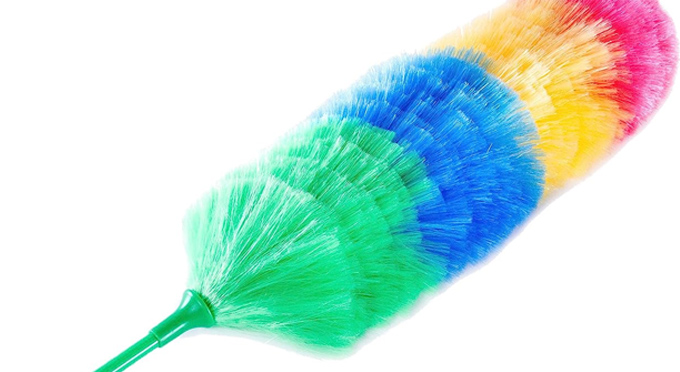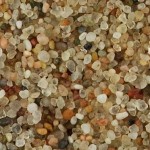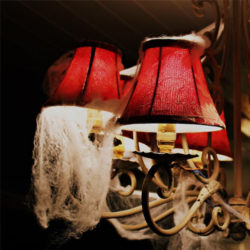
Are you looking for a good duster to clean your home? Have you recently heard that static dusters are one of the best ways to clean dust from any surface?
If you’re not familiar with the tool, it may be confusing when looking for the best one. And you may not even know where to start. In general, static dusters can be found in almost every cleaning section, but the quality and ability will vary greatly. They are sometimes called electrostatic instead of just static, but the construction and function should be the same, no matter what the name is.
Static Dusters Explained
A static duster is a cleaning tool designed to attract and remove dust from surfaces using static electricity. It typically consists of a handle and a head with bristles or fibers that are designed to generate a static charge. When the duster is rubbed against a surface, the static charge attracts and holds onto dust particles, allowing you to easily remove them from various objects and surfaces.
Static dusters are commonly used to clean delicate items, such as electronics, fragile decorations, or sensitive surfaces like glass or polished furniture. They are often preferred over traditional feather dusters or cloth-based dusters because they are more effective at capturing and holding onto dust rather than just spreading it around or causing it to become airborne.
To clean with a static duster, you simply glide the duster over the surface you want to clean, allowing the static charge to attract and pick up the dust. Periodically, you may need to shake or tap the duster gently to dislodge the trapped dust particles. Some static dusters are also designed to be washable, allowing you to clean them and reuse them multiple times.
How They Work
When you charge up the synthetic fibers, they build a strong charge and stand on end. The dusting head gets extra fluffy and becomes negatively charged. Once charged, the fibers will pull in dust and lock it in place. Unlike other duster that spread stuff around, a static duster will seem to suck it up like a magnet or vacuum.
- You can give the duster a twirl to charge it up slightly, but rubbing with a plastic bag will build a much stronger static charge.
- Once it’s fully charged, the duster will possess a strong, negatively charged static cling.
- Dust particles are naturally positively charged, so when the duster comes near the dust, it gets pulled in like magic.
- Because opposites attract, the static charge makes the dusting wand much more effective.
- Glide the synthetic fibers over any surface where dust collects, and the static charge will suck it right up.
How To Clean A Static Duster
The static charge aids in cleaning, but it also causes everything collected to stick to the synthetic fibers. While the charge is active, the dust will cling like its glued in place, but once you release the charge, the majority will fall off with a quick shake. To release the static charge, just tap the duster on the edge of a trash can, then shake up-and-down to empty out all of the dust into the garbage. Over time the fibers may get dull and dingy, and they may not perform as well. When this happens, use dish soap and water to give the synthetic polyester fibers a thorough cleaning.
- For normal debris, just shake out dust over a trash can.
- Rinse under warm water to prepare for thorough cleaning.
- To clean the fibers, gently scrub away any stubborn dirt using dish soap.
- Rinse thoroughly, and then hang to dry.

4 Types of Static Dusters
The most common static duster, and the kind that’s most effective will be one made from a high quality synthetic fiber. For the best in cleaning power and durability, you will probably want to look for a fluffy duster similar to the one in the picture above. They are usually a bright solid color, but may also come in a rainbow style, and the polyester fibers will build the strongest static charge when compared to other options. Overall, a static duster is a handy tool for dusting and maintaining cleanliness in your home or office, especially on delicate or sensitive surfaces.
Because any dusting wand that builds a static charge can be referred to as a static duster, you may find versions in a number of materials. The list below will detail those other options, but it will really come down to personal preference, and exact location to determine which version you might like best.
Static dusters are typically made from materials that are effective at generating and holding a static charge, allowing them to attract and capture dust particles. Some common materials used in static dusters include:
1. Microfiber Dusters
Microfiber is a synthetic material made of extremely fine fibers that have electrostatic properties. Microfiber dusters are popular because they are effective at attracting and trapping dust particles due to their high surface area and ability to generate static electricity.
2. Lambswool Dusters
Lambswool is a natural material sourced from sheep. It has inherent static properties that make it effective at attracting dust. Lambswool dusters are often used for delicate surfaces, as the soft fibers are gentle and do not scratch or damage the items being cleaned. When you rub surfaces to clean them, a slight charge will build to aid in the task. You won’t be sucking in dust like a magnet, but the dust you collect will remain securely in the material. This natural material will need special cleaning over time, and may not offer the same longevity of synthetic alternatives.
3. Dusters Made From Synthetic Fibers
Various synthetic fibers, such as polyester or nylon, can be used in the construction of static dusters. These fibers can be specially treated or engineered to have static-generating properties. Synthetic fiber dusters are durable, easy to clean, and often more affordable compared to natural materials. This type will build the strongest charge if you get the right one, but with this style, it is also easy to end up with a cheap and ineffective version.
4. Dusters Made From Feathers
Feather dusters have been used for dusting for a long time. The feathers create a static charge as they brush against surfaces, allowing them to attract dust. As you work, the friction will build the charge. Ostrich feathers are particularly popular due to their softness and ability to generate static electricity. The charge will be one of the strongest outside of the synthetic fiber versions, but with natural feathers maintenance and longevity should be a consideration.
It doesn’t matter if you call it a poly duster, and electrostatic duster, a rainbow duster or a static duster. One thing is for sure, no matter what you call it, a Static Duster is a powerful tool for cleaning dust on almost any surface. If it’s a dusting wand, and you can build a static charge to help you clean better, then you are using a static duster. Any type will improve performance over regular rags and wands, but the strongest charge and the best durability will be found in a good quality version with the right kind of synthetic fibers.
The Best Static Duster
No one can tell you which tool is best for you, or for your specific cleaning job, but most people that use it will agree that our Static Duster is one of the best versions available. Large hotel chains, cleaning professionals, and homeowners all agree that it works well, and lasts a long time. When you add in the affordable price, it becomes a good choice for anyone to consider.
If you are looking for the best option, you’ll want to consider the features that are important to you. Some of the main features that make our Static Duster so popular include:
- Large, 17.5″ dusting head.
- Long, 9.5″ handle.
- Bending head. Flex to any angle.
- Premium polyester fibers.
- Builds a Super Strong Charge.
- Connects To Extension Poles.
- Washable When Dirty.
- Lightweight, yet durable.
- Commercial Quality.
- Solid metal core for added strength.
A static duster is one of the best tools for eliminating dust in your home, office or vehicle. You will find a wide range of options because there are many types of tools that can build a slight charge. When most people think of a static duster, they don’t think about wool or feathers, and they rarely think about microfiber. Although dusters made from these materials are technically considered static dusters, the most commonly used tool that people use the static duster term for are long, colorful dusting wands with polyester or nylon fibers. If you get one, you won’t be disappointed, unless you get a cheap one. It’s hard to beat a good quality static duster for it’s ability to quickly and efficiently collect and dispose of dust.






 Ordering Info
Ordering Info Customer Service
Customer Service Follow Us
Follow Us Search For Stuff
Search For Stuff Find Us
Find Us Call Us
Call Us Pay Us
Pay Us

0 Comments so far.
Use the form below to add your own thoughts or questions. Scroll down to read what other people had to say.